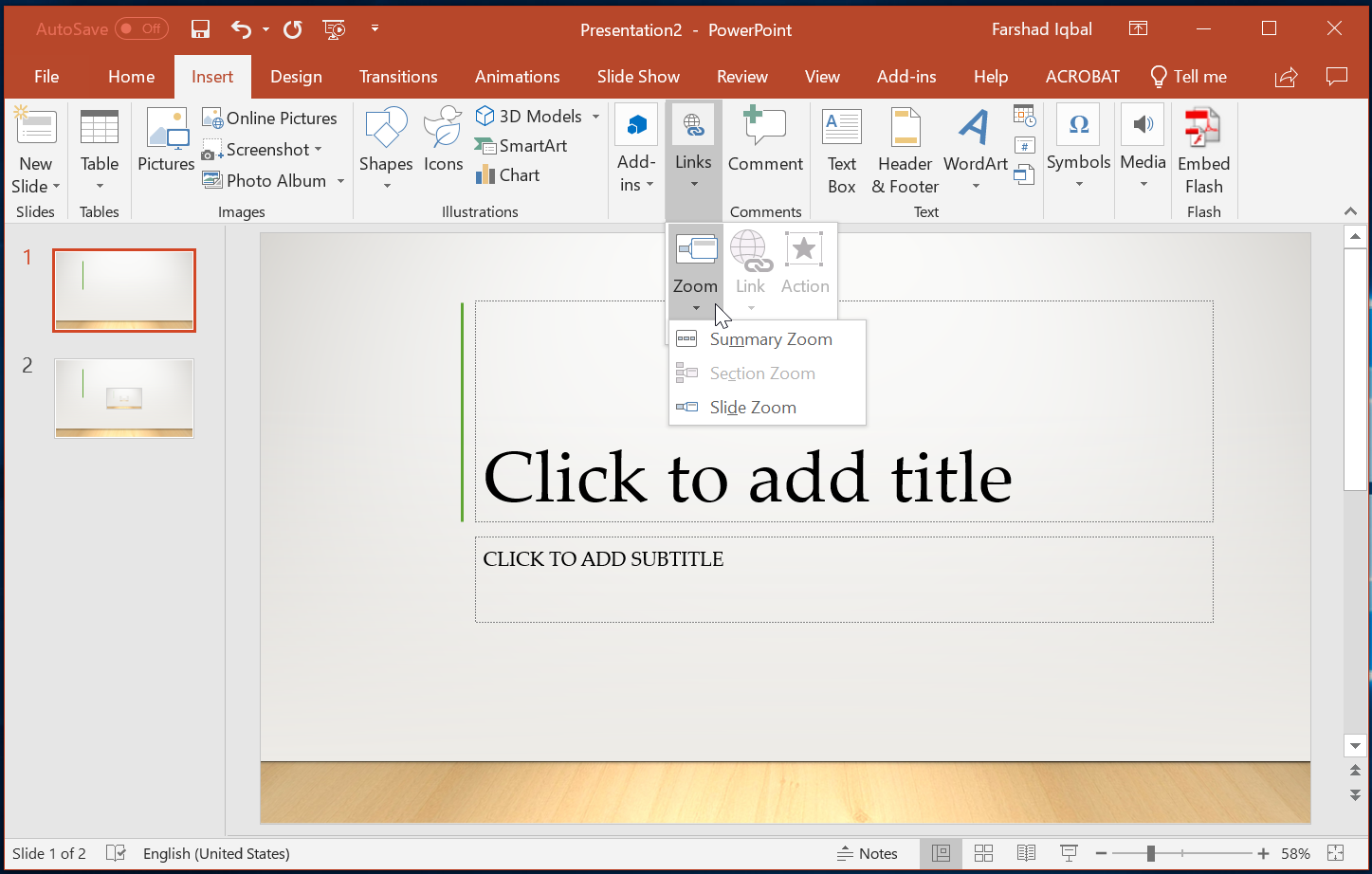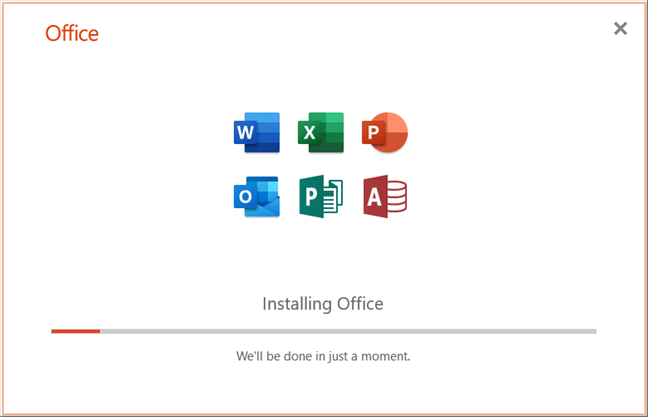Note
Office 365 ProPlus is being renamed to Microsoft 365 Apps for enterprise. For more information about this change, read this blog post.
You can change the export resolution in Microsoft PowerPoint by saving a slide in a picture format. There are two steps to this process: Use the system registry to change the default resolution setting for exported slides, and then save the slide as a picture at the new resolution.
- Under Audio Tools, on the Playback tab, in the Audio Options group, do one of the following. To start the audio clip automatically when you show the slide, in the Start list, click Automatically. To manually start the audio clip when you click it on the slide, in the Start list, click On Click. To play an audio clip as you click through the slides in your presentation, in the Start list.
- About PowerPoint in Microsoft Office 365 In the window that opens, you can see the exact version of your PowerPoint. The version number of PowerPoint in Microsoft Office 365 If you do not see an Account button, load a presentation first: it can be an existing one or you can create a new one right now.

Step 1: Change the export resolution setting
Important
Follow the steps in this section carefully. Serious problems might occur if you modify the registry incorrectly. Before you modify it, back up the registry for restoration in case problems occur.
Collaborate for free with an online version of Microsoft PowerPoint. Save presentations in OneDrive. Share them with others and work together at the same time.
By default, the export resolution of a PowerPoint slide that you want to save as a picture is 96 dots per inch (dpi). To change the export resolution, follow these steps:
Exit all Windows-based programs.
Right-click Start, and then select Run. (In Windows 7, select Start, and then select Run.)
In the Open box, type regedit, and then select OK.
Locate one of the following registry subkeys, depending on the version of PowerPoint that you're using:
PowerPoint 2016, 2019, PowerPoint for Office 365
HKEY_CURRENT_USERSoftwareMicrosoftOffice16.0PowerPointOptions
PowerPoint 2013
HKEY_CURRENT_USERSoftwareMicrosoftOffice15.0PowerPointOptions
PowerPoint 2010
HKEY_CURRENT_USERSoftwareMicrosoftOffice14.0PowerPointOptions
PowerPoint 2007
HKEY_CURRENT_USERSoftwareMicrosoftOffice12.0PowerPointOptions
PowerPoint 2003
HKEY_CURRENT_USERSoftwareMicrosoftOffice11.0PowerPointOptions
Select the Options subkey, point to New on the Edit menu, and then select DWORD (32-bit) Value.
Enter ExportBitmapResolution, and then press Enter.
Make sure that ExportBitmapResolution is selected, and then select Modify on the Edit menu.
In the Edit DWORD Value dialog box, select Decimal.
In the Value data box, specify a resolution of 300. Or, use the parameters from the following table.
Decimal value Full-screen pixels (horizontal × vertical) Widescreen pixels (horizontal × vertical) Dots per inch (horizontal and vertical) 50 500 × 375 667 × 375 50 dpi 96 (default) 960 × 720 1280 × 720 96 dpi 100 1000 × 750 1333 × 750 100 dpi 150 1500 × 1125 2000 × 1125 150 dpi 200 2000 × 1500 2667 × 1500 200 dpi 250 2500 × 1875 3333 × 1875 250 dpi 300 3000 × 2250 4000 × 2250 300 dpi Note
See the Limitations section for more information when you set this value.
Select OK.
On the File menu, select Exit to exit Registry Editor.
Step 2: Export the slide as a picture

In PowerPoint, open your slide presentation, and then open the slide that you want to export.
On the File menu, select Save As.
In the Save as type box, select one of the following picture formats:
- GIF Graphics Interchange Format (.gif)
- JPEG File Interchange Format (*.jpg)
- PNG Portable Network Graphics Format (*.png)
- TIFF Tag Image File Format (*.tif)
- Device Independent Bitmap (*.bmp)
- Windows Metafile (*.wmf)
- Enhanced Windows Metafile (*.emf)
Note
You may want to change the picture's save location in the Save in box. You may also want to change the name of the picture in the File name box.
Select Save. You will be prompted by the following dialog box:
Select Current Slide Only. The slide is saved in the new format and resolution in the location that you specified in the Save in box.
To verify that the slide is saved in the resolution that you specified, right-click the picture, and then select Properties.
Limitations
When you set the ExportBitmapResolution registry value in PowerPoint, there's a maximum DPI limitation to consider for some versions of PowerPoint.
Maximum DPI is dependent upon the slide size. The formula is as follows:maxdpi = (sqrt(100,000,000 / (slide with * slide height)), where slide width and height are in inches.
For example, for a standard 13.3' x 7.5' slide, the equation would be:sqrt(100,000,000 / (13.333 * 7.5) ) = 1000.
PowerPoint 2019, 2016, 2013, and 365
There is no fixed DPI limit. Slide export is limited only by how large the resulting bitmap gets. PowerPoint can support bitmaps up to 100,000,000 pixels (width x height). For standard widescreen slides (13.3' x 7.5'), this means a maximum DPI of 1,000. For the older style 10' x 7.5' slides, this typically means a maximum DPI of 1,155.
PowerPoint 2010 and older
The maximum resolution that PowerPoint can export is 3,072 pixels, based on the longest edge of the slide. For example, the standard 10' × 7.5' slide has a maximum effective DPI value of 307. The 3,070-pixel result (10 × 307 = 3070) falls within the 3,072-pixel limit. However, any DPI setting that's greater than 307 for a standard slide reverts to the limit of 3,072.
| Decimal value | Pixels (horizontal × vertical) | Dots per inch (horizontal and vertical) |
|---|---|---|
| 307 | 3072 × 2304 | 307 dpi |
Install Powerpoint 365

The 3,072-pixel limit also applies to saving the slide programmatically.
Powerpoint 365 Login
For example, the following code programmatically saves a picture that has the dimensions of 3072 × 2304 pixels:
More information
Powerpoint 365 Free Download
For information about changing the size of your slides, see Change the size of your slides.
